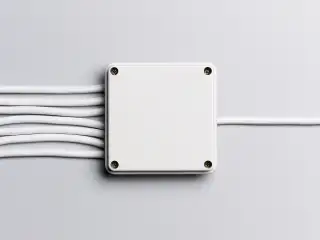Why You Should Stop Multitasking and Start Singletasking

Multitasking doesn’t work. In fact, it decreases your productivity by as much as 40%. In addition to lessening your productivity, it also lowers your IQ and shrinks your brain—reducing density in the region responsible for cognitive and emotional control.
According to a study by the Centers for Disease Control and Prevention, 31% of U.S. drivers ages 18-64 report they had read or sent text or email messages while driving within the last 30 days. Worse, a whopping 69% report they had talked on their cell phone.
So what’s our stressed-out society to do? One word: singletasking.
Here are nine ways to get started:
1. Realize that multitasking is a myth
Your brain is incapable of simultaneously processing separate streams of information from multiple tasks. That’s because there’s “interference” between the two tasks, says MIT’s Dr. Earl Miller. So, in actuality, multitasking simply doesn’t exist. What you’re really doing is task-switching—the technical term for moving very quickly and ineffectively between tasks. You task-switch within tenths of a second, and thereby don’t consciously notice delays.
2. Commit to your choices
Singletasking obliges you to do one thing at a time—excluding any other demands at that moment. This means you must stand firm and genuinely commit to your choices. You can manage your next task after working on the existing one. You don’t have to complete every task all at once, just the current period of time dedicated to it.
3. Discipline your brain
How often do you meet someone and instantly forget her name? This indicates that your mind was distracted, that it was preoccupied with something else entirely. The inability to concentrate on a name or conversation is evidence of what I deem SBS—Scattered Brain Syndrome. Singletasking isn’t only about getting things done. It’s also about developing focus. Living in the present will affect the very essence of your life, including work, relationships, and everything else that matters to you.
4. Park extraneous thoughts
Singletasking doesn’t require you to discard distracting thoughts. Instead, it provides simple systems to set them aside until you can redirect your mind. One technique is to “park” other ideas in a designated place, such as a notes page on your smartphone, and then quickly return to the current endeavor.
5. Build fences
At work, it’s up to you to control your environment—to “build fences” to keep potential distractions, such as noise and pop-ups, at bay. Rather than blame technology (think your computer and smartphone) or nearby colleagues, take control of your workspace and gadgets. For example, before a conference call, close your door or put a “Quiet” Post-it note outside your cubicle. Mute all chimes, ringers, and pings, and turn off visual alerts and social media messaging.
6. Practice clustertasking
Does reading and replying to texts, emails, and social media messages lure you away from bigger, more important projects? Then try clustertasking—a technique whereby you bunch related tasks into specific segments during the day. At the office, for instance, you could confine your emailing to three segments daily—when you arrive in the morning, before lunch, and as you prepare to leave for the day.
7. Grow your attention span
The average human attention span is eight seconds, reports the National Center for Biotechnology Information at the U.S. National Library of Medicine. This is one second less than the attention span of a goldfish. That’s right—a goldfish has you beat. Next time you’re “busy” surfing the Web, ask yourself if you’re really sidestepping solitude and introspection. Try carving out a little time each day to be left alone with your thoughts.
8. Say no early and often.
Attempting to be all things to all people is more than unrealistic—it’s a recipe for disaster. It’s perfectly fine, even responsible, not to respond to every request immediately. “No, I can’t right now” is not equivalent to “No, I won’t ever do it.” By saying no, you’ll be free from the constant frustration of half-finished tasks.
9. Ask others to call you out
Old habits die hard. From time to time, you’ll almost certainly go back to your old ways, reverting to task-switching. So ask your family, friends, and co-workers to call you out. You may have myriad excuses for an exception. No matter, thank them for their vigilance.
Devora Zack, CEO of Only Connect Consulting, Inc., is the author of three books, published globally in as many as 25 languages. Her new release is Singletasking: Get More Done—One Thing at a Time (Berrett-Koehler). An international expert in leadership development, she is an award-winning keynote speaker, consultant, and coach. Visit myonlyconnect.com.